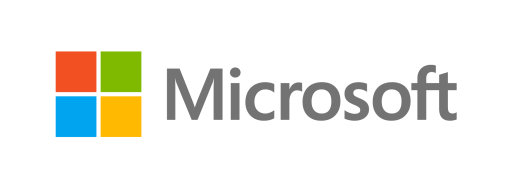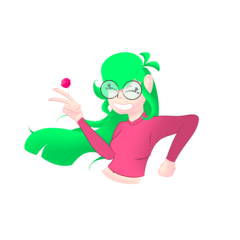

Pinceles de textura de sombreado (Hatching Texture Brushes) Hatching Texture Brushes
Content ID:2172032
-
32 176
La eclosión se realiza rápidamente con un conjunto de:
- 10 pinceles de textura de sombreado
- 2 herramientas de "Raspado de tono" (ajustar el ancho de línea)
- 19 Pinceles de Eclosión Directa / Serpientes / Sprays
- 5 pinceles de sombreado vertical
- 10 pinceles de escotilla curva
- Un consejo útil sobre cómo eclosionar convenientemente con herramientas de relleno
(Actualizado: 04.05.25)
Hatching made fast with a set of:
- 10 Hatch Texture Brushes
- 2 "Tone Scraping“ Tools (adjust linewidth)
- 19 Direct Hatch Brushes / Snakes / Sprays
- 5 Vertical Hatching Brushes
- 10 Curve Hatch Brushes
- A hopefully useful tip about conveniently hatching with fill tools
(Updated: 04.05.25)








- Justo arrastra la textura en una capa y añade una máscara oscurecida (puedes encontrar El nombre de las texturas en las propiedades de la herramienta Avanzado en "Textura".)
- A continuación, dibuja sobre la máscara para añadir la textura a tu dibujo ^^






- Puede cambiar el tamaño y el ángulo/rotación de la textura de sombreado en el panel de propiedades de la herramienta.
- El anti desbordamiento está activado, puedes apagarlo si está jugando con lo que quieres hacer.
- Algunos de los pinceles tienen partes ligeramente transparentes, si no te gusta esto, establece la capa en monocromo.










- Just drag the texture on a layer and add a blacked out mask (You can find the name of the textures in the advanced tool properties under „Texture“.)
- Then draw on the mask to add the texture to your drawing ^^






- You can change the size and angle / rotation of the hatching texture in the tool property panel.
- Anti overflow is turned on, you can turn it off if it’s messing with what you want to do.
- Some of the brushes have slightly transparent parts, if you don’t like this, set the layer on monochrome.


Pinceles de textura de sombreado Hatch Texture Brushes
-
Pincel de textura de sombreado 1 Hatching Texture Brush 1
-
Pincel de textura de sombreado 2 Hatching Texture Brush 2
-
Pincel de textura de sombreado 3 Hatching Texture Brush 3
-
Pincel de textura de sombreado 4 Hatching Texture Brush 4
-
Pincel de textura de sombreado 5 Hatching Texture Brush 5
-
Pincel de textura de sombreado 6 Hatching Texture Brush 6
-
Pincel de textura de sombreado 7 Hatching Texture Brush 7
-
Pincel de textura de sombreado 8 Hatching Texture Brush 8
-
Pincel de textura de sombreado 9 Hatching Texture Brush 9
-
Pincel de textura de sombreado 10 Hatching Texture Brush 10
Herramientas de raspado de tono (ajustar el ancho de línea) Tone Scraping Tools (adjust linewidth)
Pinceles de Eclosión Directa / Serpientes / Sprays Direct Hatch Brushes / Snakes / Sprays
-
Serpiente de escotilla 1 Hatchsnake 1
-
Serpiente de escotilla 2 Hatchsnake 2
-
Serpiente de escotilla 3 Hatchsnake 3
-
Serpiente de escotilla en solitario (perpendicular) Solo Hatch Snake (perpendicular)
-
Serpiente de escotilla en solitario (perpendicular) 2 Solo Hatch Snake (perpendicular) 2
-
Serpiente rociadora de escotilla individual Solo Hatch Spray Snake
-
Solo Hatch Spray (unidireccional) Solo Hatch Spray (one direction)
-
Spray de escotilla en solitario (aleatorio) Solo Hatch Spray (random)
-
Spray de escotilla 1 Hatchspray 1
-
Spray de escotilla 2 Hatchspray 2
-
Spray de escotilla 3 Hatchspray 3
-
Nube de escotilla 1 Hatch Cloud 1
-
Nube de escotilla 2 Hatch Cloud 2
-
Nube de escotilla 3 Hatch Cloud 3
-
Nube de escotilla 4 Hatch Cloud 4
-
Nube de escotilla 5 Hatch Cloud 5
-
Nube de escotilla 6 Hatch Cloud 6
-
Nube de arena (raspar o tonificar) Sand Cloud (scraping or toning)
-
Ruido de arena (raspado o tonificación) Sand Noise (scraping or toning)
Pinceles de escotilla vertical Vertical Hatch Brushes
Pinceles de sombreado curvo Curve Hatch Brushes
-
Escotilla curva 1 Curve Hatch 1
-
Escotilla curva 2 Curve Hatch 2
-
Escotilla curva 3 Curve Hatch 3
-
Escotilla curva 4 Curve Hatch 4
-
Escotilla de curva 5 Curve Hatch 5
-
Escotilla curva 6 Curve Hatch 6
-
Escotilla curva 7 Curve Hatch 7
-
Escotilla curva 8 Curve Hatch 8
-
Escotilla curva 9 Curve Hatch 9
-
Escotilla curva 10 Curve Hatch 10
Historial de actualizaciones
Abril 2024:
Pinceles de escotilla vertical
Pinceles de escotilla curva 1-3
Mayo 2025:
Pinceles de textura de sombreado patrón sin costuras fijo
Nuevo efecto de borde de los pinceles de textura de sombreado
Pinceles de textura de sombreado 8-10
Cepillos de escotilla curva 4-10
April 2024:
Vertical Hatch Brushes
Curve Hatch Brushes 1-3
May 2025:
Hatch Texture Brushes seamless pattern fixed
Hatch Texture Brushes new border effect
Hatch Texture Brushes 8-10
Curve Hatch Brushes 4-10
Versión antigua





























































































